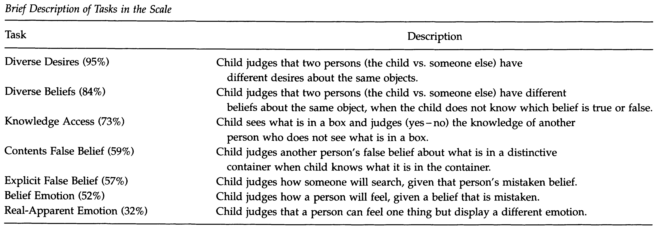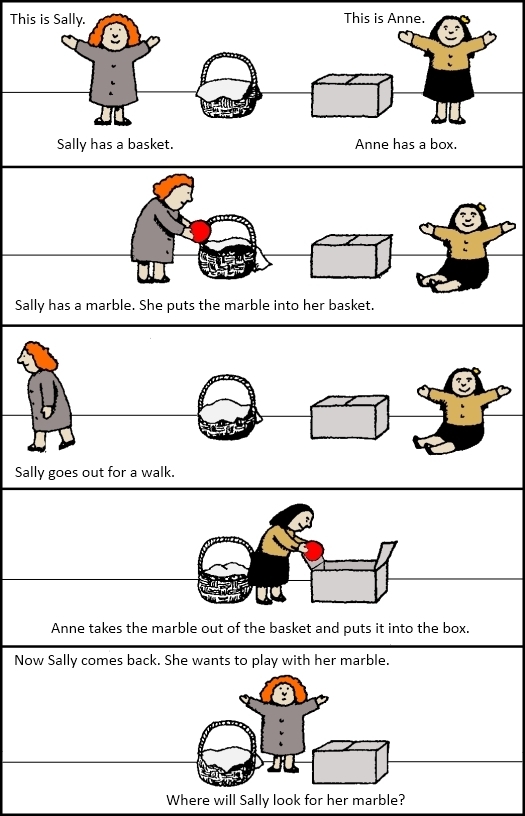Film stands out as a particularly effective medium in conveying psychology to the public. This year’s Oscar nominees for Best Picture provide numerous examples of psychological phenomenon—PTSD in American Sniper, adolescent development in Boyhood, and psychological control in Whiplash. These films will make you laugh (The Grand Budapest Hotel and Birdman), make you cry (The Imitation Game; Selma; The Theory of Everything), all while temporarily pulling you into the respective world each film creates. Although much is to be said about having a talented cast and crew, the audience plays a large role in the whole psychology aspect of it. The emotional pulls of movies, television, and books can in part be attributed to us having theory of mind. Theory of mind refers to the cognitive ability to infer the mental states of others and take another person’s perspective. This includes appreciating that others have beliefs, desires, and intentions that are different from our own. It’s a “theory” because any given person can only truly intuit his or her own mind through introspection; without direct access to the thoughts of others, comprehension of another person’s views, likes, and goals relies on extrapolation. Empathy and perspective taking are also related concepts to Theory of Mind.
Basic evidence for Theory of Mind emerges around 4 years of age and develops to become more sophisticated over time (Wellman & Liu, 2004). Not all Theory of Mind tasks are of equal difficulty. That is, it is not an all or nothing phenomenon. The percentages depict the percent of children from 3-7 years of age that correctly answered the scenario.
The first milestone of Theory of Mind development is recognizing that others can have beliefs that are not necessarily congruent with reality (understanding false belief). The Sally-Anne task is probably one of the most common versions of testing children’s false beliefs.
This task involves telling a story about two characters, Sally and Anne. Sally hides a marble in her basket and leaves the room. Then Anne takes the marble from the basket and puts it in a box. Sally returns and the child is asked where Sally would look for the marble. If the child acknowledges false beliefs, then s/he will say the basket.
With this, it becomes a little clearer why Theory of Mind is essential for genres like comedy or horror, which play with the incongruency between the audience’s knowledge and the character’s knowledge of any given situation.
There are other types of Theory of Mind tasks that do not involve as much language. The Mind in the Eyes task, for example, is another method to assess Theory of Mind in older individuals without the need for explicit storytelling. You can try it out here!
Typically developing adults are incredibly adept at reading the emotional states of others, which is an important social cognitive skill that allows for empathy. Social neuroscientists have identified neural networks involved in mentalizing and are currently researching its development.
Many empirical studies have evaluated explicit Theory of Mind by asking questions or having participants make judgments about another person’s actions and behaviors. However, I’m not necessarily consciously acknowledging the protagonist’s mental states through a movie. Other researchers have used eye-tracking methods to evaluate implicit Theory of Mind reasoning and have some evidence to suggest that implicit and explicit Theory of Mind processing systems may be partially independent. Implicit Theory of Mind may reflect spontaneous social understanding whereas explicit Theory of Mind may further involve aspects of verbal reasoning (Schuwerk et al., 2014).
Theory of Mind certainly should not be taken for granted and our ability to reason about the mental states of others is critical for everyday social interactions. Theory of Mind reasoning appears to be second nature typically developing adults that we can appreciate another person’s perspectives, their beliefs and intentions, even in the absence of direct engagement–as in the case in films. There are still a few weeks until the Academy Awards to watch at least a few of the best picture nominees. While there are many things that make a film great, there is a psychological component that in part hinges on your social cognitive capacity to infer the emotions, intentions and beliefs of the protagonists.

